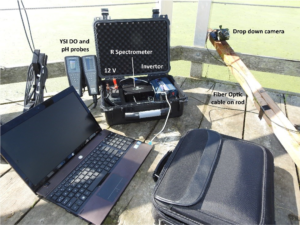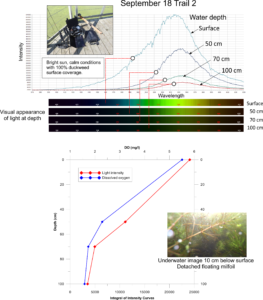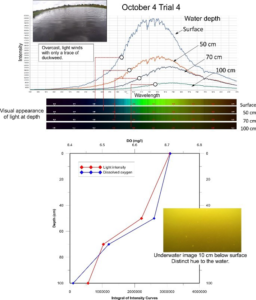TOKL author is Robert Bowen, Diversified Scientific Solutions
Purposes of the experiment
In aquatic settings, cyanobacteria respond to specific frequencies of light. Algal blooms have detrimental impacts on light penetration and photosynthetic oxygen production. The purpose of this experiment is to examine the correlation of light penetration (intensity and frequency) and dissolved oxygen as a function of water depth.
Description of experimental setups
A Thunder Optics R-Spectrometer will be used in the field to sample spectra at discrete water depths. A 3 mm fiber optic cable will be lowered into the water column and data will be collected to measure changes in intensity and frequency with depth. As these data are acquired, water properties such as dissolved oxygen, temperature and pH will be measured at these same depths. Water samples will also be taken and examined under a microscope to determine the dominant phytoplanktonic species.

Main results of the experiment
A two-page summary was submitted with photos and experimental results. Preparations are being made for the 2021 field season spanning the months of May-October.



Materials
Light Penetration in Canadian Eutrophic Lake.pdf
*TOKL text and pictures are original and the Intellectual property of the author.